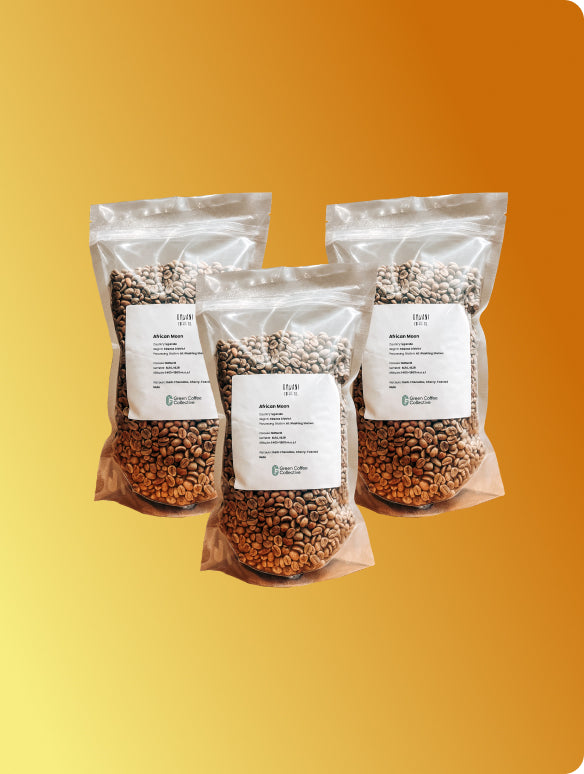Coffee roasting significantly contributes to the coffee industry’s total carbon footprint, impacting local environments and communities, and incurring high costs for business owners. Sustainable coffee roasting involves applying energy efficiency and sustainable technology to mitigate these problems. This guide helps coffee roasters save the environment and money.
Introduction to Sustainable Coffee Roasting
Like many other industries, coffee still has a long way to go to meet sustainability targets. As the bridge between consumer and importer, roasters have a significant responsibility to consider their environmental impact.
In the UK alone, there are approximately 650 coffee roasters. Roasting and packaging contribute to around 15% of the coffee industry’s carbon footprint. Roasters can significantly reduce their carbon footprint by changing their operations.
Whether you're an existing coffee roaster or planning to start your own roasting business, there are numerous benefits to improving the sustainability of coffee roasting. Thoughtful strategies and cutting-edge technology offer new ideas on sustainable roasting for all scales of coffee roasters.
What are the environmental impacts of roasting coffee?
Coffee roasting is an energy-consuming process requiring consistent high temperatures. This typically involves heating green coffee beans through air or heated surfaces.
Currently, coffee roasting results in the release of significant airborne particles, including:
- Volatile organic compounds (VOCs)
- Carbon dioxide
- Carbon monoxide
- Nitrous oxide
These toxins pose risks not only to workers but also to surrounding communities. On a larger scale, CO2 contributes to global climate change.
Many coffee roasters are older models using gas-fired equipment to produce thermal energy, resulting in CO2 and carbon monoxide emissions. These emissions culminate in smoke and odours that are unpleasant and dangerous.
While afterburners can mitigate some volatile chemicals, their high energy costs pose challenges for businesses.
Why should coffee roasters care about making their business more sustainable?
There are several reasons for coffee roasters to embrace sustainability:
- Customers are increasingly environmentally conscious and more likely to support businesses prioritizing sustainability.
- Climate change will drastically affect coffee-growing communities, reducing regional suitability for coffee growing and impacting the industry.
- Green roasting technologies can save businesses money, especially on energy bills.
How can coffee roasters begin to identify their carbon footprint?
Roasters should start by measuring and monitoring their emissions to identify the weakest points in their sustainability efforts. This data helps them strategize on reducing unnecessary costs.
Collaborating with sustainability experts is crucial. This helps discover the best starting points and builds valuable networks.
What are the core principles of sustainable coffee roasting?
Cutting-edge technologies, known as ‘cleantech’ or ‘climate tech’, are at the forefront of sustainable coffee roasting. Key technologies include:
- Heat recirculation systems: These systems recycle existing heat back into the roaster, saving energy.
- Emission reduction systems: Filtration systems reduce smoke and other contaminants.
- Electric roasters: These roasters operate on electricity instead of gas.
- Renewable energy compatibility: Utilizing solar and wind energy.
Companies like Coffee-Tech Engineering are transparent about their approaches to greener coffee roasting, setting new standards for efficient and eco-friendly roasting.
What are the challenges of making a coffee roaster more sustainable?
Transitioning to greener technologies involves costs and logistics, which can be challenging for established businesses. Additionally, installing renewable energy sources may require permissions from building or landowners.
There are no clear-cut solutions; they depend on the specific circumstances of each roaster. Long-term investment in sustainability can reduce future costs. Even with these challenges, taking small steps and conducting preliminary research are key. This can inspire unique solutions for a more sustainable coffee industry.
Sustainable coffee roasting manufacturers and technologies
Loring
- Champions efficiency with compact machines, reducing expenses and saving the environment.
- Provides up to 80% fuel savings compared to conventional coffee roasters.
- Uses multiple single-task motors for simultaneous roasting functions.
- Recirculates warm air for quicker target times and less energy use.
Bellwether Coffee
- Uses all-electric machinery with ventless technology, reducing the carbon footprint of a pound of coffee by almost 90%.
- Claims the lowest emissions impact of any commercial roaster.
- Easily integrates with alternative energy sources.
Roastaire
- Developed the world’s first ‘Closed-Loop’ fluidized-bed coffee roaster, reducing energy consumption and greenhouse gas emissions by 85%.
- Produces fewer emissions annually than a single vehicle at full capacity.
- Utilizes clean air technology with a fluidized-bed roasting process, reclaiming heat to save energy.
- Internal air scrubbing captures around 80% of particles and emissions.

